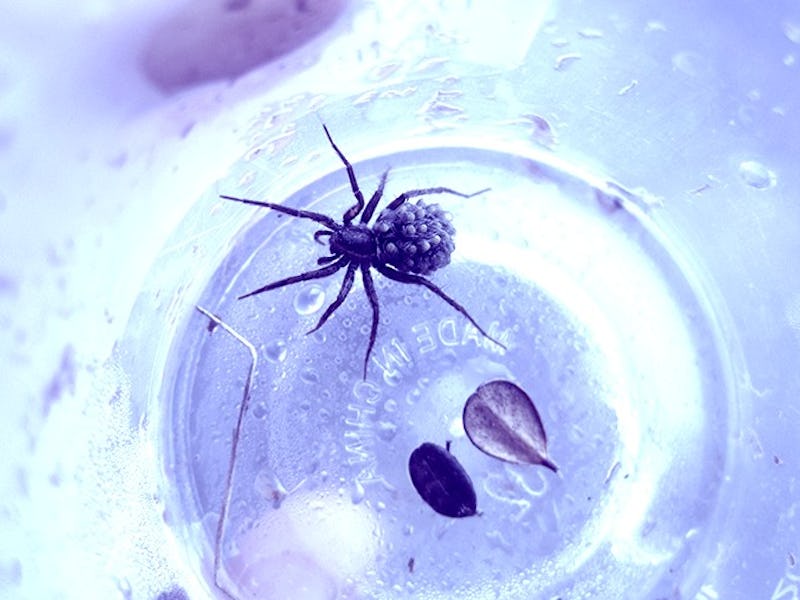Nature's creepiest crawler is thriving as climate change warms the Arctic
Recent research reveals the latest example of spider behavior changed by warming temperatures.

In the Arctic — already a weird place to encounter a spider — the chances of spotting arachnids are on the rise.
Thanks to warming temperatures, Arctic wolf spiders are able to have more offspring than usual, according to a new study. This means a baby spider boom.
Researchers discovered that Arctic wolf spiders, Pardosa glacialis, are benefitting from the early spring brought on by the climate crisis. They're able to produce more batches of offspring, called clutches, because warmer temperatures extend the season when the spiders are active, scientists report.
Researchers dissected individual egg sacs from the spiders and counted the number of eggs and partially developed juvenile spiders. They compared those egg contents with the size of the mothers and determined that the spiders were producing two separate clutches — something previously only observed in spiders living in lower latitudes.
The spiders birthed during the second clutch appeared significantly later in the season. In years when the snowmelt happened earlier, the first clutches occurred earlier and the second clutches were larger.
"Likely, females produce their first clutch earlier in those years which allow them time to produce another clutch," write the authors of the study, published June 24 in the journal Proceedings of the Royal Society B.
The study provides the first evidence of invertebrates in the Arctic producing additional clutches as a result of global warming. "This could be a common but overlooked phenomenon due to the challenges associated with long-term collection of life-history data in the Arctic," the study team explains.
"Moreover, given that wolf spiders are a widely distributed, important tundra predator, we may expect to see population and food web consequences of their increased reproductive rates."
Wolf spider on the mossy tundra of the Arctic Circle.
Some research has suggested that these bigger-than-usual bouts of reproduction can have another outcome on Arctic wolf spiders' behavior: cannibalism.
A study published in May in the Journal of Animal Ecology found high rates of competition between spider moms and their offspring. Wolf spiders have resorted to cannibalism in previous experiments, and the influx of offspring could have the same effect in nature's new normal circumstances.
Researchers say that this effect could also have implications for Arctic ecosystems as a whole because wolf spiders are widely distributed.
New spidey senses — This baby spider boom isn't the first instance of spiders getting weird as the climate changes.
A 2019 study found that a social spider, Anelosimus studiosus, has become more aggressive as a result of increased tropical cyclones — another effect of climate change. Typically, the group-dwelling spiders hunt together, hang out in the same webs, and even help each other raise kids. But hurricanes change up the typical social behavior in the colonies, found the study.
“There’s a behavioral tipping point when very very aggressive colonies stop working together, start killing each other, and the group wisely disbands,” lead study author Jonathan Pruitt told Inverse at the time. “Combine hurricane increases with global warming and I think you could get something like that.”
Abstract: Spiders at southern latitudes commonly produce multiple clutches, but this has not been observed at high latitudes where activity seasons are much shorter. Yet the timing of snowmelt is advancing in the Arctic, which may allow some species to produce an additional clutch. To determine if this is already happening, we used specimens of the wolf spider Pardosa glacialis caught by pitfall traps from the long-term (1996–2014) monitoring program at Zackenberg, NE Greenland. We dissected individual egg sacs and counted the number of eggs and partially developed juveniles, and measured carapace width of the mothers. Upon the discovery of a bimodal frequency distribution of clutch sizes, as is typical for wolf spiders at lower latitudes producing a second clutch, we assigned egg sacs to being a first or second clutch depending on clutch size. We tested whether the median capture date differed among first and second clutches, whether clutch size was correlated to female size, and whether the proportion of second clutches produced within a season was related to climate. We found that assigned second clutches appeared significantly later in the season than first clutches. In years with earlier snowmelt, first clutches occurred earlier and the proportion of second clutches produced was larger. Likely, females produce their first clutch earlier in those years which allow them time to produce another clutch. Clutch size for first clutches was correlated to female size, while this was not the case for second clutches. Our results provide the first evidence for Arctic invertebrates producing additional clutches in response to warming. This could be a common but overlooked phenomenon due to the challenges associated with long-term collection of life-history data in the Arctic. Moreover, given that wolf spiders are a widely distributed, important tundra predator, we may expect to see population and food web consequences of their increased reproductive rates.
This article was originally published on